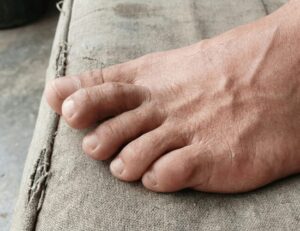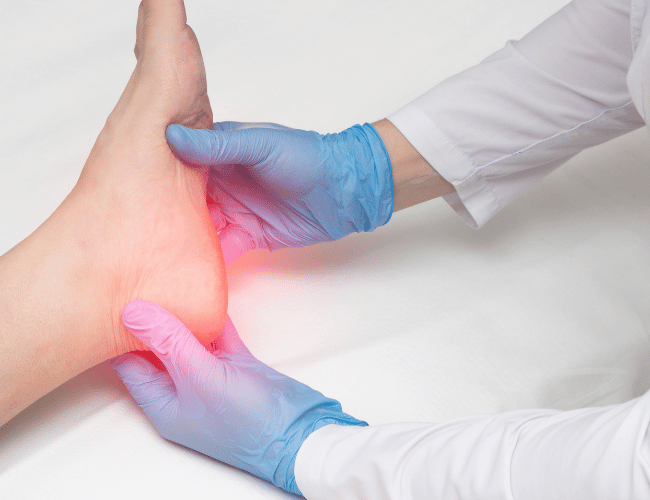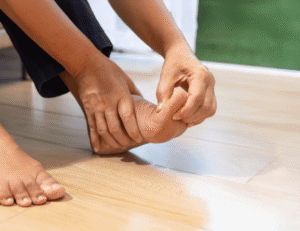
Fix Overlapping Toes: Conservative & Surgical Treatment Solutions
Overlapping Toes: What You Need to Know The architecture of the human foot is remarkable, 26 bones, 33 joints, and over 100 muscles, tendons, and

Heel pain can be surprisingly debilitating. It’s not only common, it’s also often misunderstood or misdiagnosed. One underrecognized condition we frequently see at SFL Medical Group is fat pad atrophy.
Simply put, fat pad atrophy happens when the natural padding beneath our heels or the balls of our feet begins to wear down. These fat pads act as built-in shock absorbers, protecting bones, joints, and soft tissues from stress with every step.
As the pad thins, walking becomes painful especially on hard surfaces. The heel can feel bruised or sore, creating discomfort that mimics other foot conditions like plantar fasciitis or heel spurs. That’s why proper diagnosis is key.
At SFL Medical Group, we’ve identified a broad set of factors that can contribute to this condition. While it often develops slowly over time, certain triggers can accelerate fat pad degeneration.
Many patients come into our clinic believing they have plantar fasciitis, but subtle symptom differences often reveal fat pad atrophy.
Because the pain can mirror other foot issues like heel spurs or nerve compression, diagnosis often requires a trained eye and imaging.
At our South Florida podiatry clinics, we take a comprehensive, patient-centric approach. Diagnosis isn’t based on guesswork, it’s based on science and technology.
After reviewing your medical history and discussing your symptoms in-depth, we typically conduct:
Based on the results, we tailor a treatment plan that aligns with your pain level, lifestyle, and activity goals.
The good news? Fat pad atrophy doesn’t mean you’re stuck with chronic heel pain. Our specialists in Miami offer a range of both conservative and advanced treatments.
Many patients respond well to non-invasive options, especially in early stages.
For more advanced cases or when conservative care isn’t enough, we offer:
We’ve seen excellent outcomes from patients who undergo a combination of therapies, especially when paired with physical therapy and patient education.
One of the gaps in online medical content we’ve noticed is a lack of recovery guidance. That’s why we create detailed, personalized recovery roadmaps for each patient at SFL Medical Group.
Most recovery plans follow this general trajectory:
We also encourage patients to journal symptoms weekly and use recovery tracking visuals, another unique element we offer.
Living in a vibrant, year-round active place like Miami makes prevention essential. Whether you enjoy beach walks, tennis, or fitness studios, here’s how to stay padded:
Strengthening and stretching exercises can help ease pressure and improve support across the foot.
Our podiatrists often pair these with at-home routines that include warm foot soaks, icing, and nightly elevation.
We consistently get asked about how these conditions differ. Here’s a quick comparison:
At SFL Medical Group, we combine biomechanical insight with advanced treatment modalities. Our board-certified podiatrists have helped countless patients regain comfort through proven, personalized care.
Plus, our location in South Florida means we understand the lifestyle needs of active Miami residents from daily walkers to pickleball enthusiasts. Relief doesn’t just mean being pain-free, it’s being empowered to return to the life you love.
Click here to contact us for a Fat pad atrophy consultation.
More To Explore

Overlapping Toes: What You Need to Know The architecture of the human foot is remarkable, 26 bones, 33 joints, and over 100 muscles, tendons, and

What Is Bursitis in the Foot? Foot pain can be caused by many things from plantar fasciitis to nerve entrapment but one often overlooked culprit

©2025 South Florida Multispecialty Medical Group. All Rights Reserved.